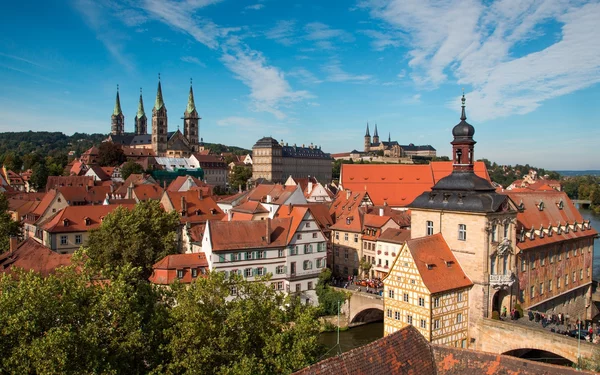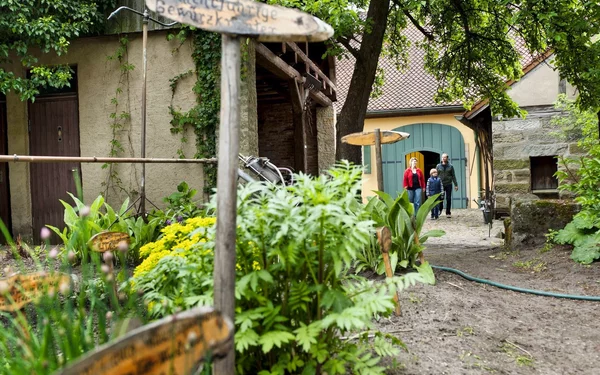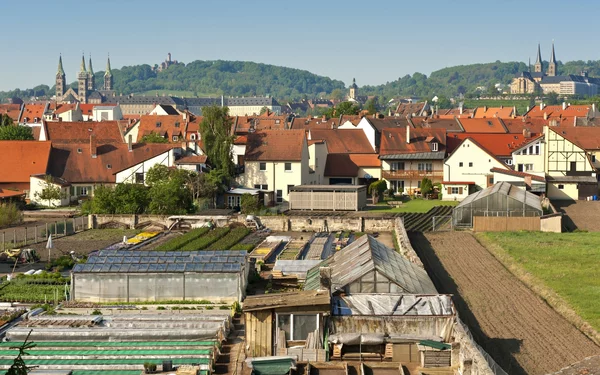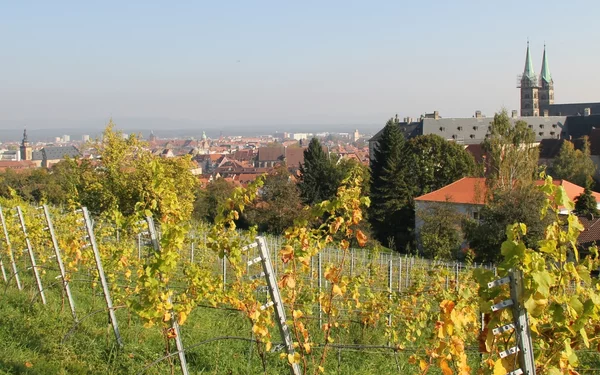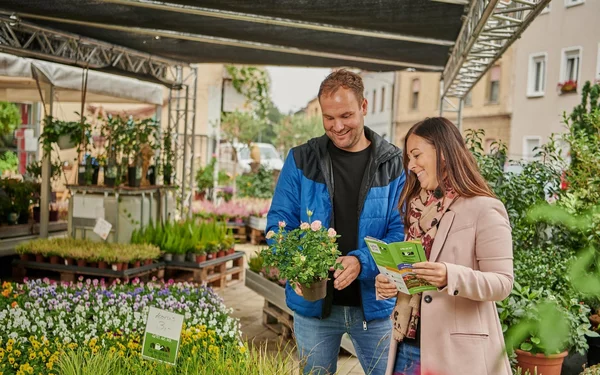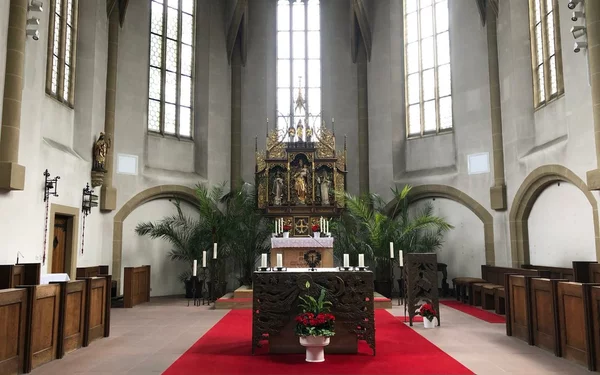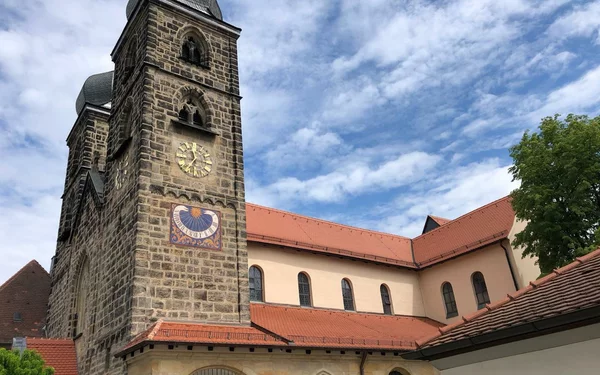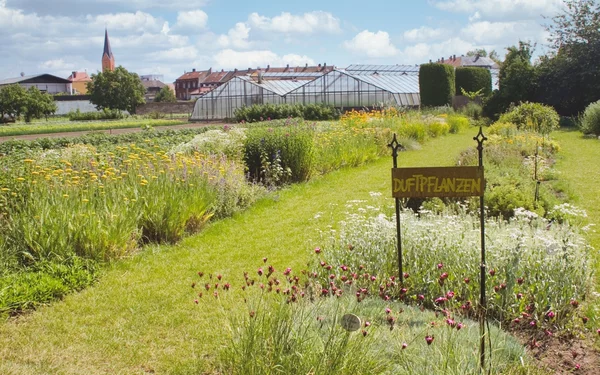On a voyage of discovery in Bamberg's garden centre
Everything you always wanted to know about liquorice: Take a walk and discover the historical world of Bamberg and the horticultural culture of liquorice, aniseed and mustard oil. Discover now!
Bamberg
5 h
4 km
Liquorice, the basic ingredient of delicious liquorice, was already an export hit from Bamberg in the early 16th century. Valued as a valuable medicine, it became popular as a sweet in the 18th century with the addition of sugar or honey.
Today, Bamberg is the only place in northern Europe where liquorice is once again professionally grown and processed - in the Bamberg Gardeners' Town. Like the cathedral city and the island city, it has been recognised as a UNESCO World Heritage Site.
Numerous gardening families settled east of the right branch of the Regnitz as early as the 14th century and produced widely popular culinary delicacies. Even today, this part of the city is still characterised by its rural character and is dotted with numerous market gardens.
The 5-kilometre walk will not only make the hearts of all those who love gardens beat faster. You will also experience how old horticultural culture is being revitalised today. The tour offers an insight into Bamberg's former living environments and historical gems, which are well worth a visit not far from "Little Venice" and the imperial cathedral.
But liquorice is not the only traditional Bamberg horticultural speciality. Let yourself be surprised! What's the story behind the Mussärol, for example, or the Bamberg onion? Of course, you will also have the opportunity to sample culinary delights and take home many a culinary souvenir. And perhaps you'll be able to sample some real sweet treats here.
Please check the opening times of the individual tour highlights in the app before you start your journey so that you can take advantage of all the recommendations.
A city tour for nature lovers and culture vultures
Start and end station
Start station
Bahnhof Bamberg
6 tour steps
4 km / 5 Stunden
End station
Bahnhof Bamberg
Our tip: Please make sure to check your train connection and the expected capacity before you start your journey.
Schedule
Tour starts on Bahnhof Bamberg
Direction
Bamberg railway station was put into operation in 1844. The historic building, designed by architect Georg Friedrich Christian Bürklein, has been preserved apart from minor alterations. In front of it is one of the green steles that enrich your walk through the garden centre with information. Here you can read about the bright but also the dark sides of the railway connection for Bamberg's gardeners.
From the station forecourt, turn right into Ludwigstraße. Following Klosterstraße, you will come to an approximately 700-year-old sacred place that was an important centre of attraction in the early days of the Gardeners' Town, the Dominican Convent of the Holy Sepulchre.
Dominican Convent of the Holy Sepulchre
Originally, the Corpus Christi Chapel was open to the faithful of the neighbourhood for their church services. On 12 February 1352, the wealthy Bamberg couple Kunigunde and Franz Münzmeister donated the monastery of St. Catherin zu dem Heiligen Grab. This made it possible to build the monastery church, which was consecrated in 1356. The Cross of Divine Mercy, also donated by the Münzmeisters, subsequently became a popular pilgrimage destination.
The Peasants' War and the Thirty Years' War left their destructive mark on the monastery. Secularisation, however, was a decisive factor, as a result of which the monastery was declared dissolved in 1803 and passed into military administration. A garrison hospital was established. The church served the military as an equipment and clothing store until 1918. The convent was re-founded in 1926, with eight Dominican nuns from the St Ursula convent moving in. More recently, the sisters have taken up the monastic tradition of producing sacred textiles.
The convent opens some of its rooms to the public on "open days".
Heiliggrabstraße 24
96052
Bamberg
Direction
From the monastery, walk back a little way. Follow the Spiegelgraben and pass the traditional Schumm nursery on the right at no. 10. The Schumm family has been growing vegetables since the 19th century. The family business therefore has old local varieties on offer, which have been propagated over generations.
The next destination is a highlight in the truest sense of the word and awaits you directly at the Böhmerwiese nursery in Heiliggrabstraße. The nursery has been family-owned since 1913 and is now run by siblings Sabine Gründler and Ralf Böhmer. The company is not only known for its floristry and horticultural work, but also for its successful cultural and tourist events. The Bamberg Garden Fair and the Onion Festival are held here every year.
The architecturally unique viewing platform on the Böhmerwiese is also part of the garden centre.
Gärtnerstadt viewing platform
The impressive glass viewing platform was built by architect Stefan Giers for the 2012 State Garden Show and was included in the "Bavarian Architectural Tours" in the same year. The steel and glass construction is reminiscent of a classic greenhouse. This is one of the few opportunities to access the interior of the city block through the almost completely closed perimeter block development of the Gärtnerstadt and gain an insight into the historical urban structure characterised by agriculture.
The glass building is irritating at first glance because it is slightly tilted. This initially caused some debate, but also earned the viewing platform the affectionate nickname "Leaning Tower of Bamberg".
Heiliggrabstraße 57
96052
Bamberg
- Monday: 11:00am - 05:00pm
- Tuesday: 11:00am - 05:00pm
- Wednesday: 11:00am - 05:00pm
- Thursday: 11:00am - 05:00pm
- Friday: 11:00am - 05:00pm
- Saturday: 11:00am - 05:00pm
- Sunday: 11:00am - 05:00pm
Direction
The route continues along Heiliggrabstraße and Spitalstraße to the Gardeners' and Growers' Museum. It is a unique open-air and specialised museum and is still considered an insider tip.
The gardener and horticulturist museum
A gardener from the 18th century would immediately find his way around the house and garden and be able to go about his daily work straight away. The current museum building was erected in 1767 as a drive-through and stable house in a functional design for gardeners' houses of the time. The house belonged to the Kauer family, who lived in it until the 20th century and made a considerable fortune thanks to good business. The last descendant of the Kauer family lived here until 1969.
A gardener's house with a draw well had already stood here around 1600. The furnishings of the museum were modelled in every detail on the beginnings and development of gardening culture in Bamberg. The black kitchen is identical to those used by the gardener families who lived here around 1769. The parlour is furnished in the style of the 19th century. The farmyard, including the coach house with all its utensils, gives a clear impression of the way gardening families lived and worked in the 18th and 19th centuries. In the kitchen garden next to the house, everything that the kitchen demanded at the time and that was part of the Bamberg specialities is planted. A separate part of the house and garden is dedicated to the life and work of the Häcker family. They originally worked as winegrowers on the hillsides around Bamberg, but had to switch to cold-tolerant crops during the Little Ice Age, including hops.
Visitors can discover the museum and garden on their own with an audio guide or book a guided tour.
Mittelstraße 34
96052
Bamberg
- 19.04. - 03.11.
- Tuesday: 11:00am - 05:00pm
- Wednesday: 11:00am - 05:00pm
- Thursday: 11:00am - 05:00pm
- Friday: 11:00am - 05:00pm
- Saturday: 11:00am - 05:00pm
- Sunday: 11:00am - 05:00pm
Direction
After so much exercise, mental nourishment and fresh air, you will no doubt be in the mood for some culinary refreshment. Then look forward to a visit to the Fässla brewery, which you can reach on a short walk through Letzengasse. You can find out interesting facts about the brewing trade in Bamberg on one of the green information pillars at the end of Letzengasse, on the corner of Obere Königsstraße.
Fässla Brewery
The building in which the brewery in Obere Königsstraße was founded 350 years ago dates back to the 14th century. One year after the Thirty Years' War, the brewer and brewer Hanß Lauer set up his Fässla brewery here, which means "little barrel". The Kalb family has been running the traditional brewery since 1986, now in its second generation. Seven widely appreciated beer specialities are brewed here with love and expertise in ultra-modern facilities.
But Fässla not only stands for excellent beer quality, its hospitality is also famous. In the rustic restaurants, of which the Fässla brewery operates nine, tourists feel just as at home as the locals from Bamberg, who enjoy their beer or a meal here after work. Franconian specialities such as Schäuferla and Bräten are popular and are prepared with much love.
Obere Königsstraße 19-21
96052
Bamberg
- Monday: 09:00am - 11:00pm
- Tuesday: 09:00am - 11:00pm
- Wednesday: 09:00am - 11:00pm
- Thursday: 09:00am - 11:00pm
- Friday: 09:00am - 11:00pm
- Saturday: 09:00am - 11:00pm
- Sunday: 09:00am - 12:00pm
Direction
Well fortified, we now continue along the Obere Königsstraße towards Theuerstadt, once a suburb of Bamberg. A 700-year-old document mentions Bamberg's first gardener in Theuerstadt, his name was Fritz Pleinser.
In Obere Königstraße, there is plenty for gourmets to discover, for example in the "Müller Delikatessen" shop, which sells delicacies from its own production. Perhaps you have left a little room for a small dessert at the Fässla pub, then you are sure to find something at "Müller Delikatessen".
At St Gangolf's Church from the 11th century, the oldest church in Bamberg, there is another of the green steles where you can find out more about the district of Theuerstadt. You should definitely take a look inside the church.
St Gangolf
The collegiate church in Theuerstadt was consecrated to St Gangolf in 1063. St Gangolf lived in Burgundy in the 8th century. He was a knight who, according to legend, was charitable and worked miracles. Through his prayers alone, he caused a dried-up spring to bubble up again. After forgiving his wife for her adultery and giving her half of his property, he was murdered by his wife's lover. Miracles were said to have happened at his gravesite. He was canonised and the former collegiate church of St. Gangolf is said to house part of the saint's head as a relic.
In the 12th century, the church was extended with the construction of two towers. Over the centuries, the church was increasingly gothicised and extended. However, some of the wooden beams in the roof truss still date back to the 12th century.
Until the 19th century, St. Gangolf was the spiritual and legal centre of the village.
Today, the parish of St Gangolf can once again boast a lively community life. The oldest church in Bamberg keeps itself young in a creative way and also organises church services especially for doubters under the motto "zweifelLOS".
Theuerstadt 2
96050
Bamberg
- Monday: 09:00am - 06:00pm
- Tuesday: 09:00am - 06:00pm
- Wednesday: 09:00am - 06:00pm
- Thursday: 09:00am - 06:00pm
- Friday: 09:00am - 06:00pm
- Saturday: 09:00am - 06:00pm
- Sunday: 09:00am - 06:00pm
Direction
Take the path in the direction of Egelseestraße. Take a look at the information pillars along the way to find out more about the vegetable seeds grown in the gardener's town, the types of gardener's houses and religious markings.
The Mussärol nursery is located at Nürnberger Straße 86 - the last stop on your tour. You have probably already solved the riddle of the meaning of the word Mussärol in the museum. The Mussärol nursery not only cultivates, cares for and processes herbs, it is also home to the only professional liquorice cultivation in Germany and Northern Europe. The farm shop and show garden are open on Wednesdays, Fridays and Saturdays.
Mussärol Bamberg herb nursery
The nursery has been family-owned for six generations. In 1994, Gertrud Leumer switched to organic herb cultivation and was the first organic nursery in Bamberg. It is run sustainably and as climate-neutral as possible.
The Mussärol Bamberger Kräutergärtnerei is a speciality nursery that offers visitors a wide range of plants and products three days a week. Visitors will find over 200 different herbs and aromatic plants in the show garden. Touching is expressly permitted. Here you can simply give your soul a rest and open your senses. There are guided tours on fixed dates and, of course, the farm shop offers seasonal plants that will delight any gardener, such as seedlings of various vegetable plants in May, for example old tomato varieties, as well as liquorice and herb products. Or home-grown herbs and refined herbal products, such as the popular lavender syrup.
Since 2020, the cultivation and processing of liquorice has been integrated into the Mussärol Bamberger Kräuter Gärtnerei as a further branch of production, making it unique in the whole of Germany. In the meantime, numerous points of sale can once again be supplied with Bamberg liquorice products from local cultivation.
Nürnberger Strasse 86
96050
Bamberg
- 01.04. - 30.06.
- Wednesday: 02:00pm - 06:00pm
- Friday: 10:00am - 06:00pm
- Saturday: 09:00am - 02:00pm
- 01.07. - 30.09.
- Friday: 10:00am - 06:00pm
- Saturday: 09:00am - 02:00pm
Tour ends on Bahnhof Bamberg
Direction
The way back takes you through Nürnberger Straße and Josephstraße to Luitpoldstraße.
Green steles with information about the history of the town also await you on this stage. Various bistros and snack bars as well as restaurants on the way to the railway station invite you to stop for refreshments before heading home or to reflect on your impressions over a good glass of wine. For example, the Vegan Food Rebels Bamberg at Luitpolstraße 34 and the Cocoon Restaurant at No. 55 with delicious Asian dishes.
Rich in impressions and certainly in possession of one or the other aromatic or eye-pleasing souvenir, you can comfortably start your return journey by train.
